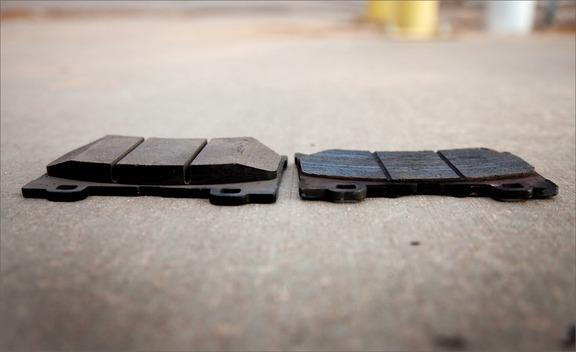Ford Mustang 1994-2014: Why is My Brake Light On?
The brake light on your dashboard goes on when the Ford Mustang is trying to tell you something. Learn how to diagnose the issue here.
This article applies to the Ford Mustang (1994-2014).
While there are several different reasons why the brake light on your Ford Mustang’s dashboard is malfunctioning, ultimately the end result is that you need to have it fixed. Not only does it tell you when the brake system is engaged, it’s also meant to inform you when there’s something wrong with the system itself. Before you take the car to the mechanic, read through these easy diagnosis steps to see if you can figure out what’s wrong with the system and perhaps even fix it yourself.

Material Needed
- Brake fluid (if necessary)
Step 1 – Check the brake fluid level
It might be low.
If your brake fluid is low, it may be what’s triggering the dashboard light to go on. The sensor will turn off when fluid is touching the sensor. Top off the brake reservoir if it's low, and check the reservoir/piping for any leaks.

Step 2 – Check the parking brake's wiring
It might be loose.
Sometimes, the parking brake's wire comes loose in the handle; the subsequent jingling of it going in and out of the connection can trigger the dashboard light to go on and off while you drive.
Take off the center console and you’ll see a wire with a metal connection on it; it’s held on by what looks like a sheet metal bolt. Tighten the bolt if it's loose.

Step 3 – Check for water leaks
Your system might be fried.
A leak into your Mustang can fry the car’s wiring. Check the floor, under the carpet, and around the doors for any signs of moisture/water collection. If present, this needs to be sealed up immediately. Depending on the amount of water getting into the car, this may require a trip to the auto body shop.

Step 4 – Check the brake pads
If the brake pads are too thin, it may trigger the light to inform you of the maintenance needed.
To repair this, loosen the lug nuts, raise the car, secure it on jack stands, and remove the wheel. Check the brake pad's thickness through the brake caliper, or remove the caliper for easier view.

Related Discussions
- Brake Light on Dash has a Mind of Its Own. Help - MustangForums.com
- Stuck TCS Low Brake Fluid and Stuck E-Brake Light Problems - MustangForums.com
- Brake Light Comes On When Braking - MustangForums.com
- Brake Lights Stay On - MustangForums.com






